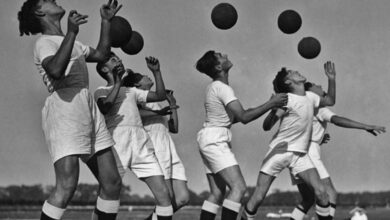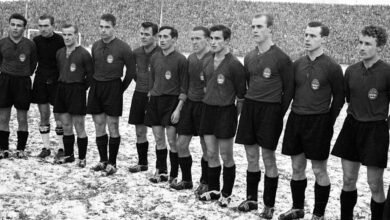Bayern Munich: Success from the start (1900 to 1932)

The story begins with Franz John from Berlin. The document establishing the club was signed by 17 members at Munich city centre restaurant ‘Gisela’ in February 1900. They were the first players – and one or two more have followed in their footsteps.
Due to financial considerations, and to resolve a pitch availability problem, Bayern joined forces with the affluent Münchner Sport-Club (MSC) on 1 January 1906, but still retained their independence.
The one concession they made was wearing the MSC club colours, which were red shorts and white shirts – the colours still worn by FC Bayern today.
The club gained momentum as early as 1907 when the Reds moved to their new ground, the Bayern pitch on Leopoldstraße. The game played to mark the move to the new home saw local rivals FC Wacker humbled in an 8-1 win for the hosts. That was the first step en route to becoming the number one football club in Munich. The supporters were able to watch the action on the pitch from the comfort of a real stand. In 1910 the club attained the title of Eastern District champions.
The first international after ten years
Bayern were unbeaten the following year and successfully defended the title, wearing – to the amusement of some Munich citizens – short shorts. And the team included their first, bonafide international player. His name was Max ‘Gaberl’ Gablonsky and he pulled on the Germany shirt for the first time on 16 May 1910 in a 3-0 defeat against Belgium. He would go on to be the first Bayern player to score a goal for Germany.
The club developed at a faster pace from this point on. FC Bayern already had 700 members in 1920 and was, as it is today, the biggest football club in Munich. In 1926 the Reds won the South German championship and the first national title came six years later in 1932, with some fans even taking to bikes for the pilgrimage to the final in Nuremberg to see Bayern beat Eintracht Frankurt 2-0. The goals were scored by Rohr and Krumm, the stars were Heidkamp and Haringer, and Austrian Richard ‘Little Dombi’ Dombi was the coach, physio, club secretary and chairman in one.





